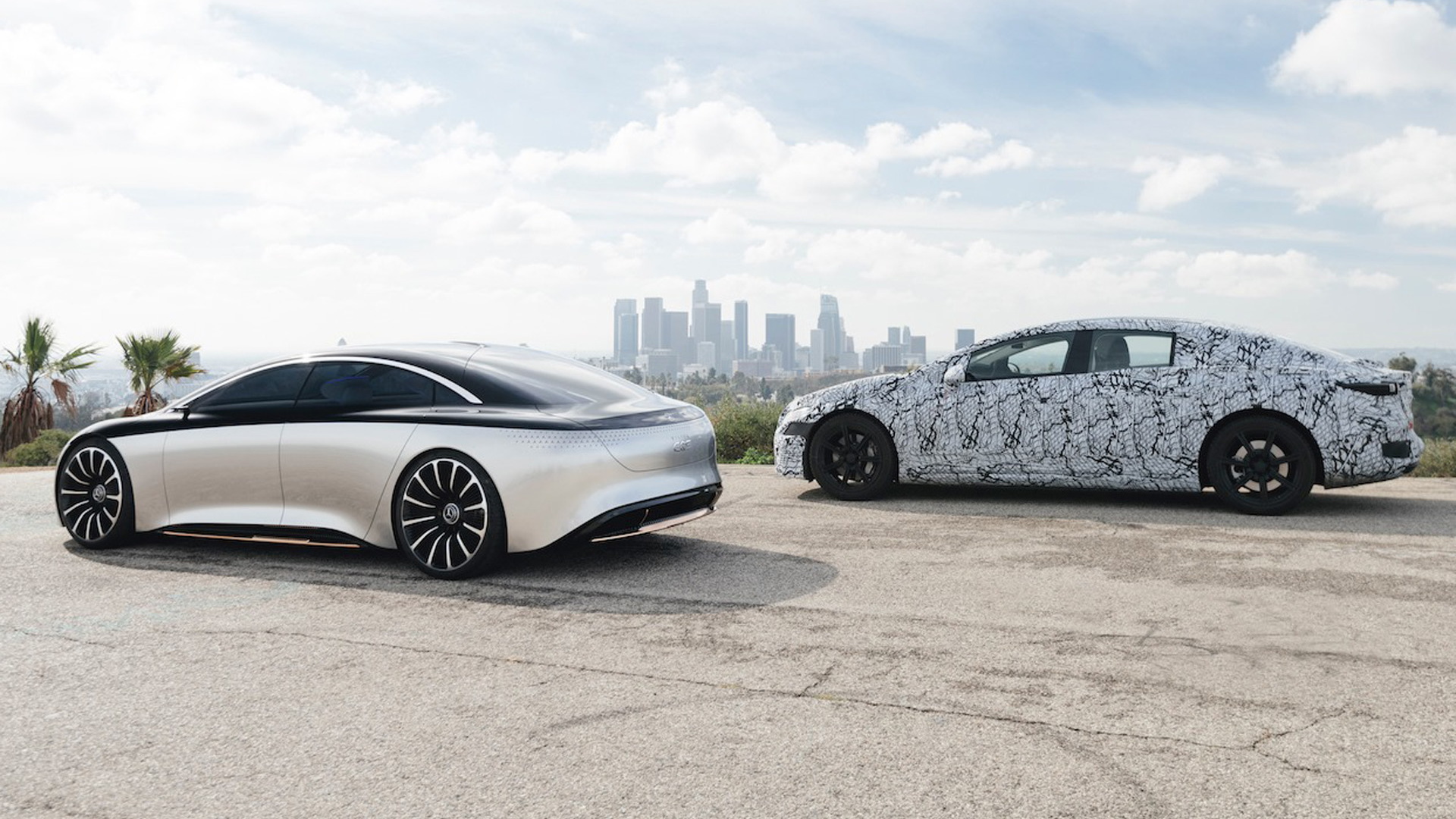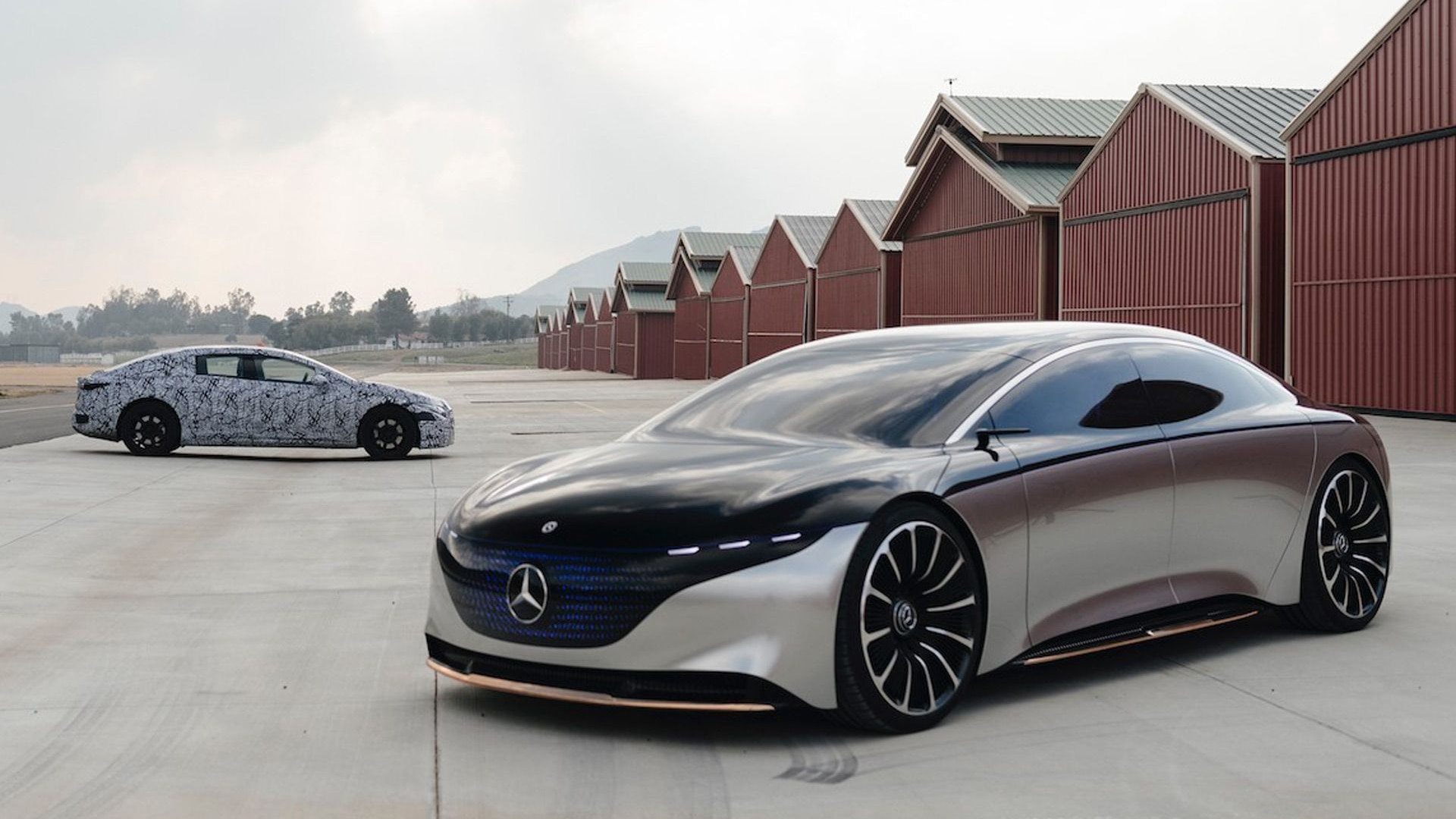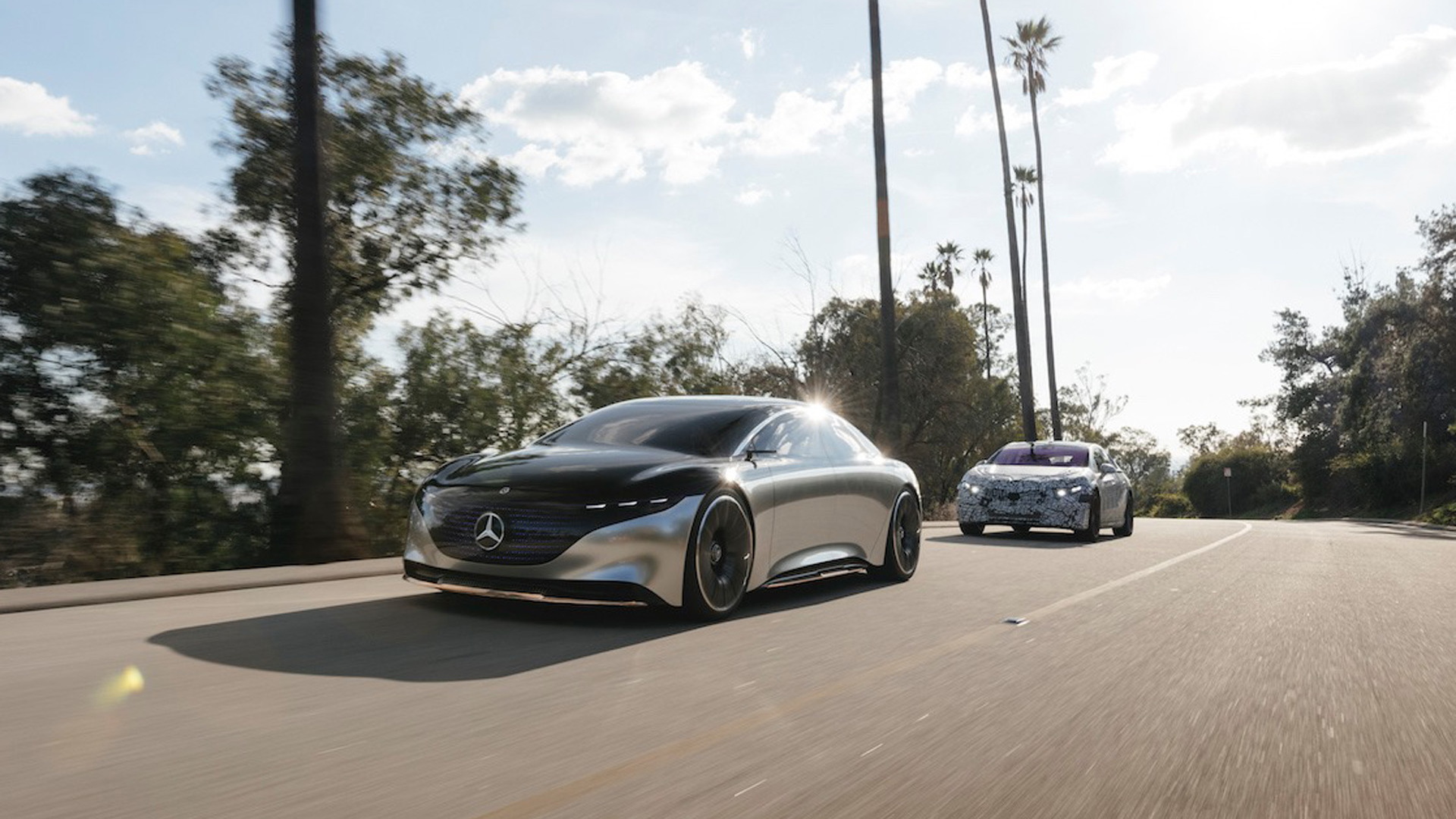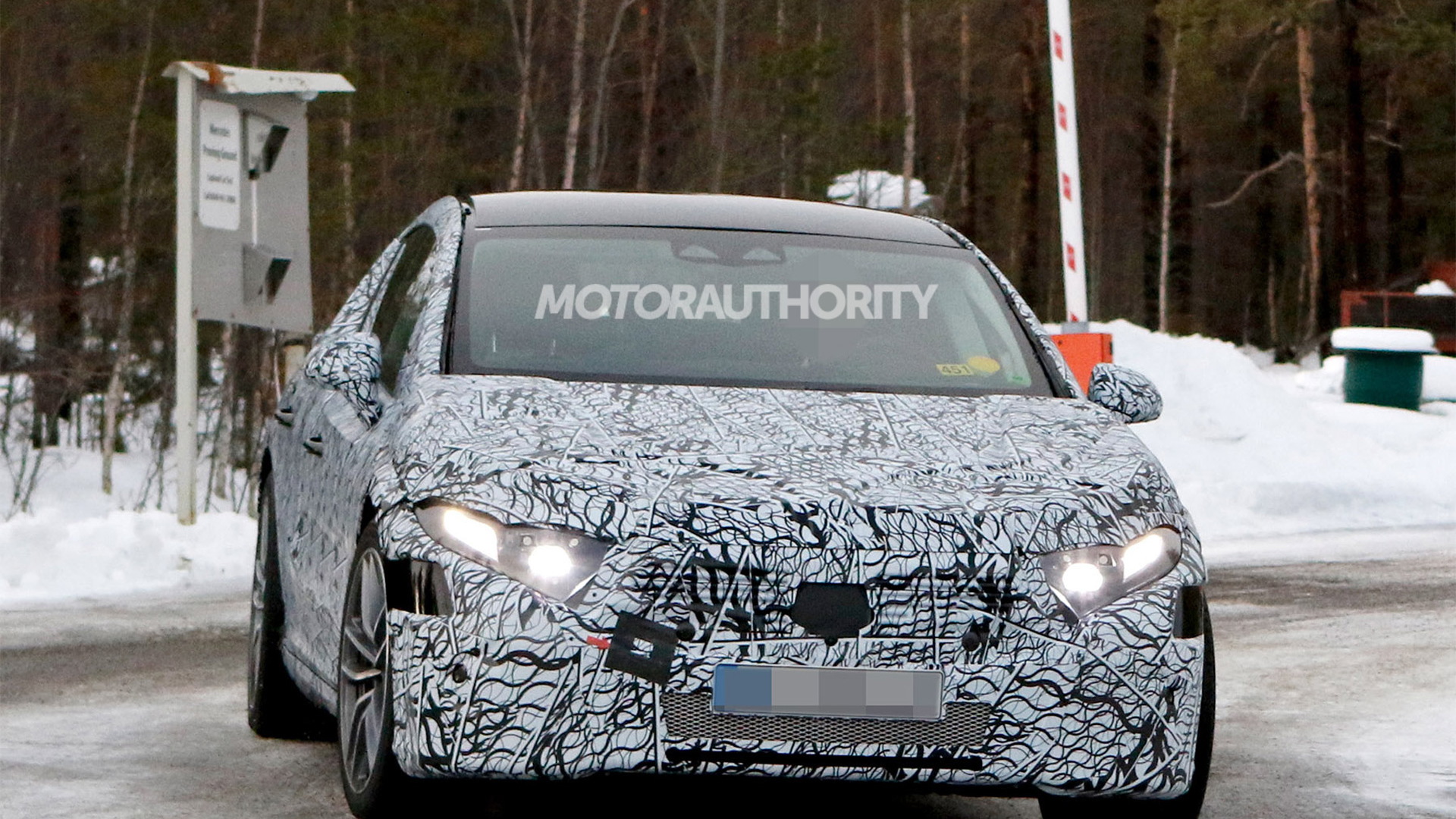How many times have we seen a cool concept's striking design so watered down for the production model that there ends up being virtually zero resemblance between the two?
Mercedes-Benz appears to be confident that this won't be the case with its upcoming EQS electric sedan previewed by last year's Vision EQS concept car, as the automaker has released a series of teaser photos showing the two side-by-side, albeit with the production EQS still heavily camouflaged.
The silhouettes of the two vehicles do appear similar, though the production EQS isn't quite as low as the concept, and its wheels are also smaller. It also appears that the production EQS will have a slightly boxier rear end which may have been designed to increase storage space or perhaps simply provide a bit of definition. To some, the rear of the concept could be perceived as a bit too featureless. We can also see that the production EQS has conventional side mirrors and an actual B-pillar, both of which are missing on the concept.

2021 Mercedes-Benz EQS prototype and Vision EQS concept
The EQS debuts later this year as a 2021 model. It will be the first model from Mercedes to ride on a dedicated EV platform, referred to internally as MEA2 (MEA1 is found in the 2020 EQC electric SUV and is derived from Mercedes' MHA platform for SUVs like the GLC and GLE). The benefit of the dedicated EV platform is the lower packaging requirements for the powertrain compared to a conventional internal-combustion car design. In the case of the EQS, you'll have a car that looks like a mid-sizer on the outside but a full-sizer inside.
It isn't clear what specs the EQS will have but the concept likely points the way. It features electric motors at the front and rear axles to form an all-wheel-drive system. Peak output is 469 horsepower and 560 pound-feet of torque, which is enough for 0-60 mph acceleration in under 4.5 seconds. Top speed is limited to 125 mph.
The concept's battery, a lithium-ion unit, has a capacity of approximately 100 kilowatt-hours which Mercedes said will enable a range approaching 435 miles on the WLTP cycle. An EPA-rated range would be lower but still should be higher than 300 miles. At the maximum charging rate of 350 kilowatts, Mercedes said a driver could expect an 80-percent charge in less than 20 minutes.






